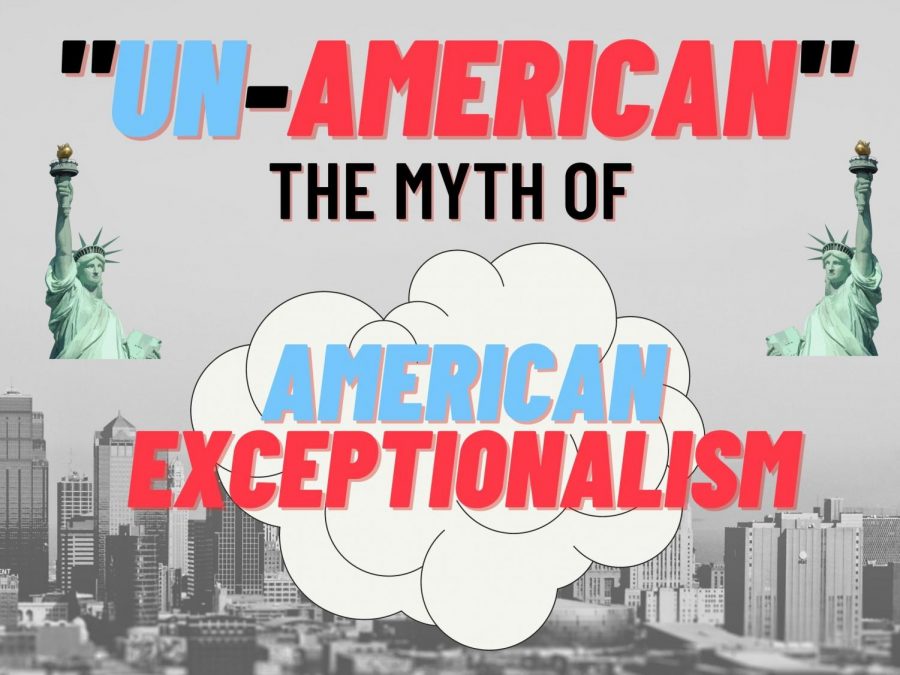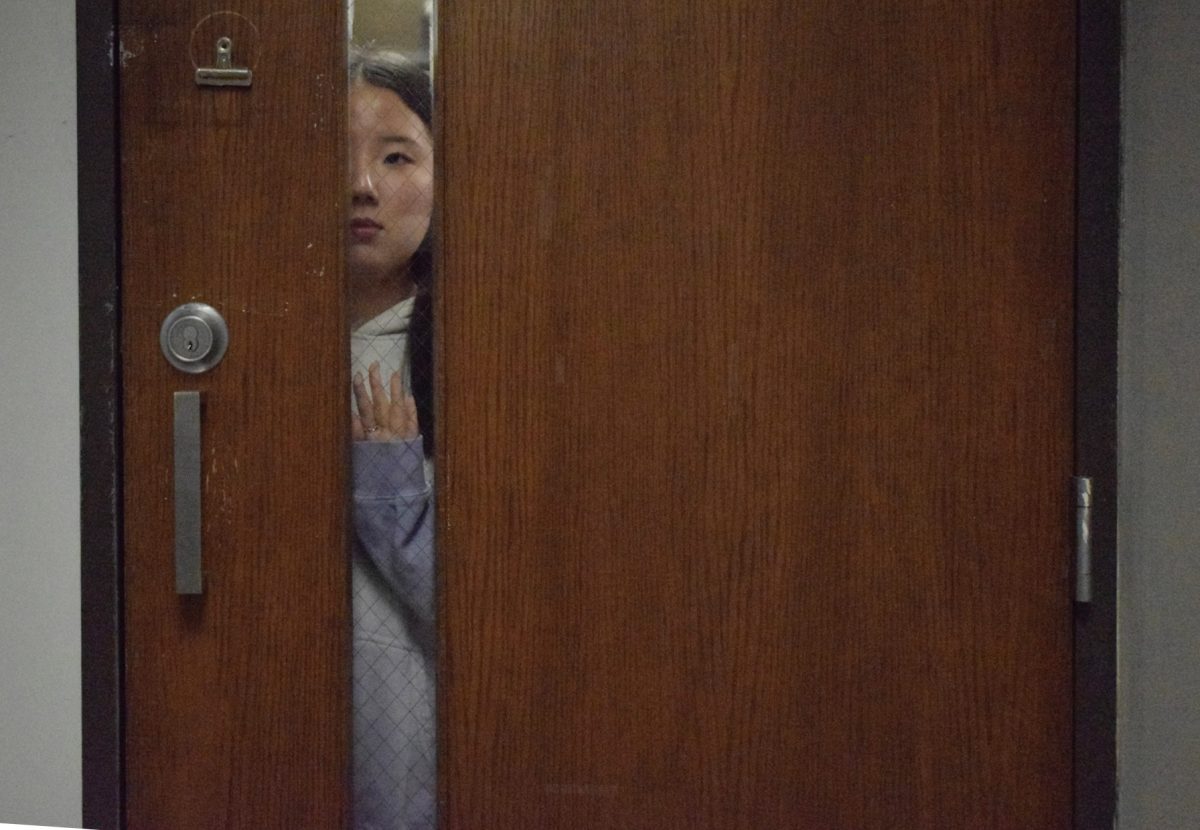From the establishment of the U.S. via Indigenous genocide to overthrowing governments domestically and abroad, the recent violence we saw at the Capitol is as American as pie. It was a frightening event. Yet to many who have studied the history and foundation of this country or experienced its violence first-hand, it was unsurprising. AmericansŌĆÖ collective amnesia about its past, coupled with its excessive nationalism, leads many to think of instances like this as a one-time tragedy. ItŌĆÖs time to debunk the myth of American exceptionalism.
Because Americans think the U.S. is superior to other countries, that our democracy is perfect, many have a hard time processing the unrest at the Capitol. Some have even gone to compare the recent disruption to countries they view as below us, when this violence is embedded in our history.┬Ā
While the riots at the Capitol building were a more flagrant example of white supremacist violence, the U.S. government commits more subtle acts every day via the unjust policies it forces upon its citizens. From enslavement that persists to this day through prison labor, to law upon law restricting voting rights to ridiculously low tax rates for the wealthy and corporations, America has really never been a land of freedom and justice for all. Despite this, the idea of American exceptionalism lives on, and we believe that our country is safe from such dangerous events.
To construe white supremacists storming the Capitol building as ŌĆ£un-AmericanŌĆØ only upholds the false connotation that America is in fact just. We are constantly fed rhetoric from both parties about American exceptionalism: the idea that the United States is a force of good for the world and an arbiter of justice domestically and internationally. This myth leads to the perception that the insurrection at the Capitol only happens in other countries, far away from our ivory tower. Well, America, it did happen here. Countless times.┬Ā
The white rage that fueled the violence against Indigenous and Black people throughout American history is the same white rage that fueled the attack at the Capitol. This is because white supremacist violence is foundational to this country. Think of the 1919 Red Summer, for example, when white supremacists incited deadly riots against Black people in over two dozen cities. Or the Tulsa Massacre in 1921 when a white mob killed nearly 300 people and burned to the ground the thriving Greenwood neighborhood in Tulsa known as Black Wall Street. Even more similar to the Capitol events, in 1898 during the post-Reconstruction Era, a mob overthrew the local biracial elected government in Wilmington, N.C. and replaced it with white supremacists. These are just a few examples of white mob violence in America, but they illustrate that violent white rage is not uncommon in this country. In fact, it is what we are built on.
However, this violence is not confined within the U.S. border. America has also been organizing and bankrolling coups across the globe to uproot any governments or groups that do not serve our governmentŌĆÖs own political interests. From 1800 to today, the U.S. has violently intervened in foreign governments 392 times. Read that again. 392 times. In Guatemala, for example, the CIA sponsored a coup and overthrew democratically-elected president Jacobo Arbenz. This directly initiated nearly 40 years of brutal U.S.-backed regimes who committed mass executions and torture. Why did the U.S. do this? Because Arbenz nationalized the U.S.-based United Fruit Company, which threatened the profits of U.S. capitalists. The U.S. also worried that ArbenzŌĆÖs radical ideas would spread to other Latin American countries.
Latin America, however, is not the only region that the U.S. infiltrated. From Vietnam and the Philippines to Iran and Syria, U.S. imperialism has brought gruesome destabilization and violence to all corners of the globe, with the sole purpose of protecting its economic hegemony.┬Ā
Despite these horrific events, Americans are still led to believe a hopeful wish about their countryŌĆÖs existence as a shining beacon of hope to the world, where hoards of desperate ŌĆ£third-worldŌĆØ countries can only dream about emulating us. But decades of interventionism in other countriesŌĆÖ democracies show that these American ideals are simply ideals because, in reality, the U.S. has a dark history. This myth of American exceptionalism, and our perpetuation of it, only serves to protect and embolden white supremacy, empire and capitalism.
So when we hear leaders and ordinary citizens renouncing the Capitol riot as something only possible in other, so-called ŌĆ£more unstableŌĆØ countries, it is the equivalent of slacktivists thinking theyŌĆÖve solved oppression by pointing out that an individual conservative is racist. This line of thinking shifts blame away from ourselves and our country and onto the few who actually took part in the attack. Pacifying the masses against taking action only serves to uphold the harmful status quo. Yes, these individual white supremacists are at fault, but that doesnŌĆÖt mean America as a whole isnŌĆÖt, or that every white person who wasnŌĆÖt involved is immediately off the hook.┬Ā
If America refuses to face its long history of white supremacy, then events like this will continue to occur unabashedly. Learning the truth about our countryŌĆÖs violent past and connecting it to its present is a necessary step we all must take. The United States is no castle on a hill and it does not truly care about democracy, as many politicians will lead you to believe. When we admit that America enacts violence toward marginalized groups domestically and abroad, breeds white supremacy and is an imperialist power, then maybe we can start working to truly rectify our past, return the land to its rightful caretakers, abolish all the oppressive systems that hold us back and envision a more just, brighter future.





![Sitting courtside before a junior varsity girlsŌĆÖ tennis match, senior Tanisi Saha rushes to finish her homework. Saha has found herself doing academic work during her athletic activities since her freshman year. ŌĆ£Being in sports has taught me how to stay organized and on top of my schoolwork. [With] a busy practice and game schedule, IŌĆÖve learned to manage my homework and study time better,ŌĆØ Saha said.](https://pwestpathfinder.com/wp-content/uploads/2025/11/DSC_0022-1200x800.jpg)
![Sophomore Maryem Hidic signs up for an academic lab through Infinite Campus, a grading and scheduling software. Some students enjoyed selecting their responsive schedule in a method that was used school-wide last year. ŌĆ£I think it's more inconvenient now, because I can't change [my classes] the day of, if I have a big test coming and I forget about it, I can't change [my class],ŌĆØ sophomore Alisha Singh said.](https://pwestpathfinder.com/wp-content/uploads/2025/10/DSC_0012-1200x801.jpg)
![Senior Dhiya Prasanna examines a bottle of Tylenol. Prasanna has observed data in science labs and in real life. ŌĆ£[I] advise the public not to just look or search for information that supports your argument, but search for information that doesn't support it,ŌĆØ Prasanna said.](https://pwestpathfinder.com/wp-content/uploads/2025/10/DSC_0073-2-1200x800.jpg)
![Junior Fiona Dye lifts weights in Strength and Conditioning. Now that the Trump administration has instituted policies such as AI deregulation, tariffs and university funding freezes, women may have to work twice as hard to get half as far. "[Trump] wants America to be more divided; he wants to inspire hatred in people,ŌĆØ feminist club member and junior Clara Lazarini said.](https://pwestpathfinder.com/wp-content/uploads/2025/05/Flag.png)
![As the Trump administration cracks down on immigration, it scapegoats many immigrants for the United StatesŌĆÖ plights, precipitating a possible genocide. Sophomore Annabella Whiteley moved from the United Kingdom when she was eight. ŌĆ£ItŌĆÖs pretty scary because IŌĆÖm on a visa. When my visa expires next year, IŌĆÖm not sure whatŌĆÖs going to happen, especially with [immigration] policies up in the air, so it is a concern for my family,ŌĆØ Whiteley said.](https://pwestpathfinder.com/wp-content/uploads/2025/05/DSC_0077-7copy.jpg)
![Shifting global trade, President Donald TrumpŌĆÖs tariffs are raising concerns about economic stability for the U.S. and other countries alike. ŌĆ£[The tariffs are] going to pose a distinct challenge to the U.S. economy and a challenge to the global economy on the whole because it's going to greatly upset who trades with who and where resources and products are going to come from,ŌĆØ social studies teacher Melvin Trotier said.](https://pwestpathfinder.com/wp-content/uploads/2025/05/MDB_3456-1200x800.jpg)



![Some of the most deadly instances of gun violence have occurred in schools, communities and other ŌĆśsafe spacesŌĆÖ for students. These uncontrolled settings give way to the need for gun regulation, including background and mental health checks. ŌĆ£Gun control comes about with more laws, but there are a lot of guns out there that people could obtain illegally. What is a solution that would get the illegal guns off the street? We have yet to find [one],ŌĆØ social studies teacher Nancy Sachtlaben said.](https://pwestpathfinder.com/wp-content/uploads/2025/01/DSC_5122-1200x800.jpg)

![Sophomore Shree Sikkal Kumar serves the ball across the court in a match against Lindbergh. Sikkal Kumar has been a varsity member of the varsity girlsŌĆÖ tennis team for two years, helping her earn the number two rank in Class 2 District 2.ŌĆ£When matches are close, itŌĆÖs easy to get nervous, but I [ground] myself by[staying] confident and ready to play,ŌĆØ Sikkal Kumar said.](https://pwestpathfinder.com/wp-content/uploads/2025/11/DSC2801-1200x798.jpg)
![Dressed up as the varsity girlsŌĆÖ tennis coach Katelyn Arenos, senior Kate Johnson and junior Mireya David hand out candy at West HighŌĆÖs annual trunk or treat event. This year, the trunk or treat was moved inside as a result of adverse weather. ŌĆ£As a senior, I care less about Halloween now. Teachers will bring their kids and families [to WestŌĆÖs Trunk or Treat], but there were fewer [this year] because they just thought it was canceled [due to the] rain. [With] Halloween, I think you care less the older you get,ŌĆØ Johnson said.](https://pwestpathfinder.com/wp-content/uploads/2025/10/DSC00892-1-1200x800.jpg)
![Focused on providing exceptional service, sophomore Darsh Mahapatra carefully cleans the door of a customerŌĆÖs car. Mahapatra has always believed his customers deserve nothing less than the best. ŌĆ£[If] theyŌĆÖre trusting us with their car and our service, then I am convinced that they deserve our 100 percent effort and beyond,ŌĆØ Mahapatra said.](https://pwestpathfinder.com/wp-content/uploads/2025/10/DSC_0018-1200x800.jpg)
![Sophomore Aleix Pi de Cabanyes Navarro (left) finishes up a soccer game while junior Ava Muench (right) warms up for cross country practice. The two came to Parkway West High School as exchange students for the 2025-2026 school year. ŌĆ£The goal for the [exchange] program is to provide opportunities for both Parkway students and our international exchange students to learn about other cultures, build connections and become confident, capable, curious and caring ŌĆö ParkwayŌĆÖs Four CŌĆÖs ŌĆö in the process,ŌĆØ Exchange Program Lead Lauren Farrelly said.](https://pwestpathfinder.com/wp-content/uploads/2025/10/Feature-Photo-1200x800.png)
![Leaning on the podium, superintendent Melissa Schneider speaks to Parkway journalism students during a press conference. Schneider joined Parkway in July after working in the Thompson School District in Colorado. ŌĆ£My plan [to bond with students] is to get things on my calendar as much as possible. For example, being in [classes] is very special to me. I am trying to be opportunistic [meeting] kids [and] being in [the school] buildings. I have all the sports schedules and the fine arts schedules on my calendar, so that when I'm available, I can get to them,ŌĆØ Schneider said.](https://pwestpathfinder.com/wp-content/uploads/2025/09/IMG_5425-1200x943.jpeg)
![Gazing across the stage, sophomore Alexis Monteleone performs in the school theater. The Monteleone familyŌĆÖs band ŌĆ£Monte and the MachineŌĆØ has been releasing music since 2012, but Alexis started her own solo career in 2024 with the release of her first single, Crying Skies. ŌĆ£My whole family is very musical, [and I especially] love writing [songs with them],ŌĆØ Monteleone said.](https://pwestpathfinder.com/wp-content/uploads/2025/09/DSC7463-1200x798.jpg)

![Leaping through the air, senior Tyler Watts celebrates his first goal of the season, which put the Longhorns up 1-0 against the Lafayette Lancers. Watts decided to play soccer for West for his last year of high school and secured a spot on the varsity roster. ŌĆ£[Playing soccer for West] is something I had always dreamed of, but hadnŌĆÖt really had a good opportunity to do until now. ItŌĆÖs [really] fun being out [on the field], and IŌĆÖm glad I decided to join the team. ItŌĆÖs just all about having fun with the boys and enjoying what time we have left together,ŌĆØ Watts said.](https://pwestpathfinder.com/wp-content/uploads/2025/09/DSC_1951-1200x855.jpg)


